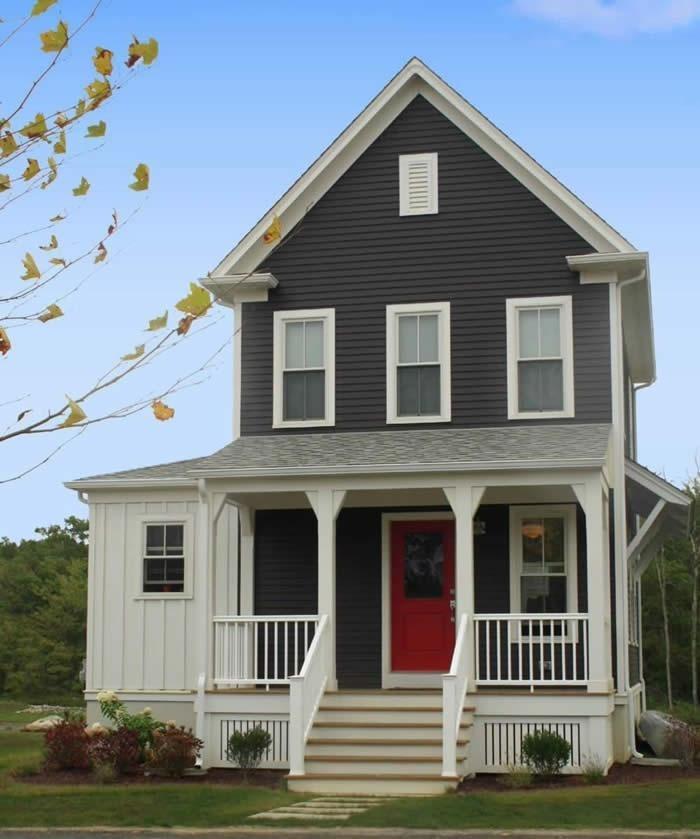Table Of Content

Paired with a crisp white trim, Marigold can be found on a variety of different architectural styles and in all areas. It works particularly well for farmhouse-style homes, but it’s versatile enough to provide a stunning effect on modern architectural styles. Since the color is fairly bold, Autumn Red pairs best with warm neutral tones like cream, beige, and tan.
How to Choose a Siding Color for Your Home
Many people equate contemporary homes with a limited exterior color scheme. But modern-style homes offer inspiration for a diverse way to showcase color and pattern, even if the palette is pretty neutral. If you're building new or remodeling your exterior, consider all the shapes and sizes of brick to create an accent feature rather than relying solely on paint for adding color.
Natural Neutrals
Vinyl Siding Colors: Tips for Picking the Perfect Palette - Better Homes & Gardens
Vinyl Siding Colors: Tips for Picking the Perfect Palette.
Posted: Thu, 19 Oct 2023 07:00:00 GMT [source]
This clean-lined property uses a thin, horizontal lap siding to emphasize its planes and create a transitional effect. When your home’s architectural style is both plain and defined, sometimes there’s nothing to do but to work with what you have. In this case, that means using a beautiful barn red to bring out the farmhouse-style appeal. The sides of this home feature a different type of siding then the front.
Red Front Door Color
“The combination of green, cream, and burgundy is a favorite for Victorian-style homes,” reports Erika Woelfel, director of color marketing for Behr Paints. “The bold color scheme gives this home a dramatic yet warm appearance.” The trio of Behr colors used here are Ivy Wreath (QE-46), Terra Sol (QE-20), and Country Lane Red (QE-07). A beige exterior trim color brightens and brings warmth to red siding, without leading to the barn aesthetic you might get with white trim.
This contemporary style home features floor-to-ceiling windows that break up the dark exterior paint color and fill the interior with ample natural light. A flagstone patio surrounding the home juxtaposes the black exterior with a natural material and an irregular pattern for a more layered outdoor space. Changing vinyl siding colors can create a fresh face for an old house, but new vinyl siding isn’t the only way to update the exterior. For example, if you have a traditional colonial-style home, earth tones or classic neutrals like beige or cream may be a great choice.

Architects, designers, and builders are also sources for updating newer homes. For both, the key is to look for someone who is a good fit for the style you like and the type of home you have. Not only our best-selling product, it’s North America's most popular brand of siding. The weather and climate in your region is a determining factor in the type of siding material you should install. For instance, certain colors stand out best in warm, sunny climates opposed to colder, snowier regions.
Blue House with White Trim

Another tone developed by combining two colors, wicker’s light shade shows off a fancy yet minimalistic aesthetic. In the picture, you will see the sides of the windows accented with a brick red shade. It will surely make your house stand out without overwhelming the eyes. If you are fond of light but not too pale type of color, I highly recommend vinyl siding in light maple.
Khaki Brown
One of the main advantages of vinyl siding is its versatility in color options. With a wide range of shades and hues available, you can find the perfect color to complement your home's exterior. Whether you prefer a classic neutral tone or a bold, vibrant shade, the right vinyl siding color can make a lasting impression. Sterling Gray is another very light gray siding that works well in numerous situations. One of the lightest shades available, Sterling is a true gray, with no warm undertones. It works well with other cool colors like blue, green, and black to create a harmonious exterior.
The Color of Your Roof
Region specific colors are common, but so are several colors that transcend localities, seen in many regions and on many styles of home. If pairing complementing colors sounds overwhelming, consider opting for a monochromatic palette where your siding and trim are the same color. Whites, grays, and blacks work perfectly for monochromatic homes, as they don’t require complementing colors to flow. However, the monochromatic look might not work for some homes, so be careful when choosing your siding and trim colors. As opposed to the deep, rich pigment of Forest Green or the muted tones of Cypress, olive siding offers a rich, grayish-green pigment.
And there may be some buyers who prefer brighter colors — reds, oranges, yellows — that often evoke excitement. Granite Gray is a lighter, more closely neutral gray that is nearly universally pleasing, working well in all regions and areas. Gray has been the hot new neutral shade that everyone loves for the last several years now.
Like earthy tones and neutrals, light and soft tones also go hand-in-hand. Choose softer tones that complement each other, such as soft yellow and pale cream or muted green with subdued gray. These colors create a cohesive appearance without standing out too much. As long as some modern elements exist on the building’s exterior, it’s also possible to use predominately traditional siding, such as this horizontal lap siding. Whether your aim is to highlight architectural details or simply to find a complementary shade for shutters and trim, the choice is an important one.

No comments:
Post a Comment